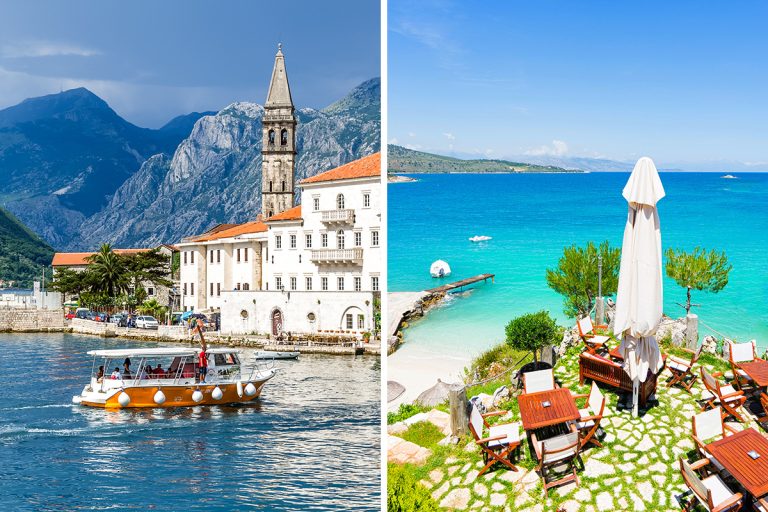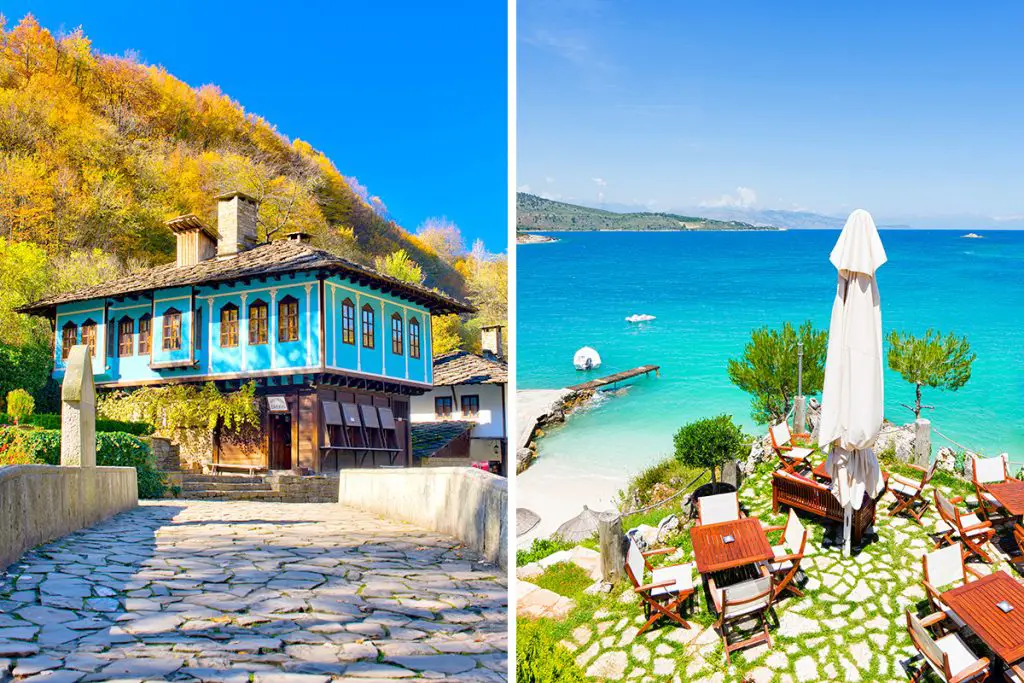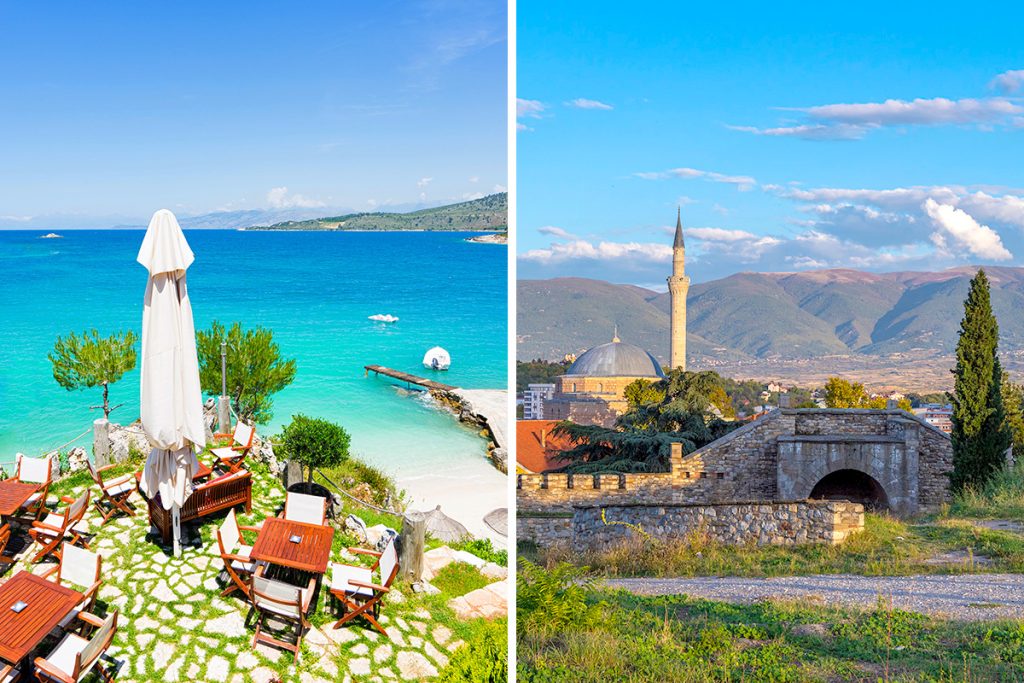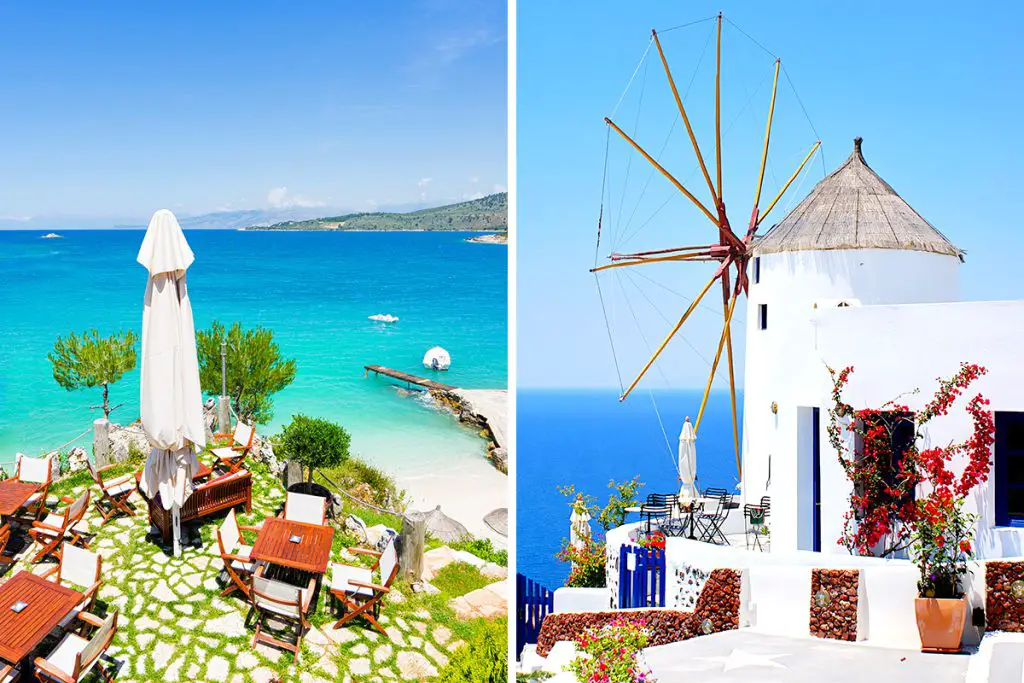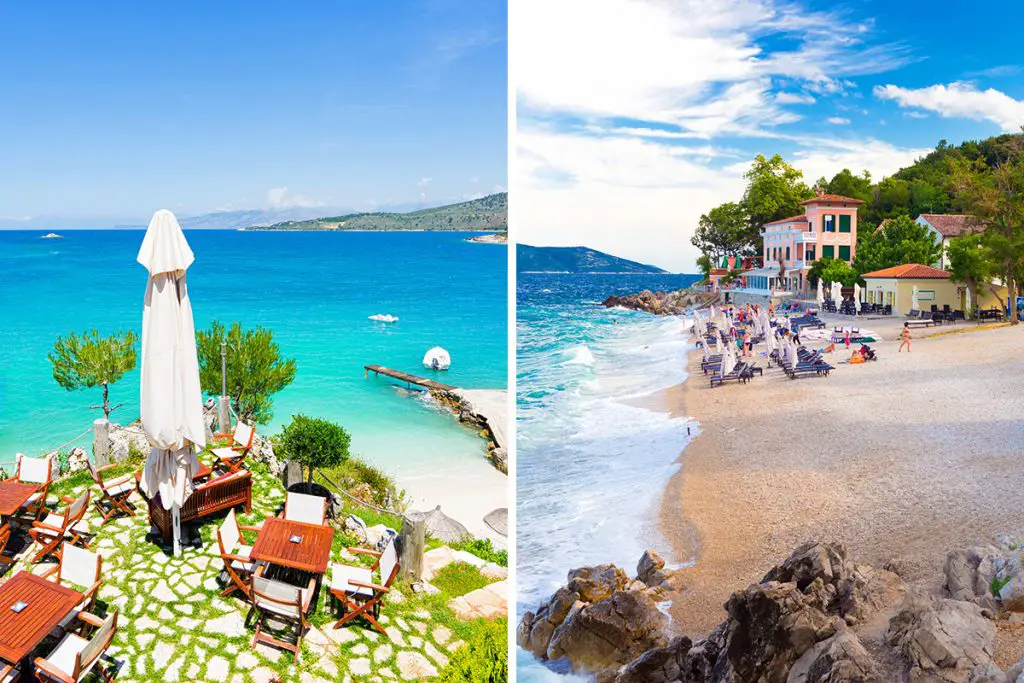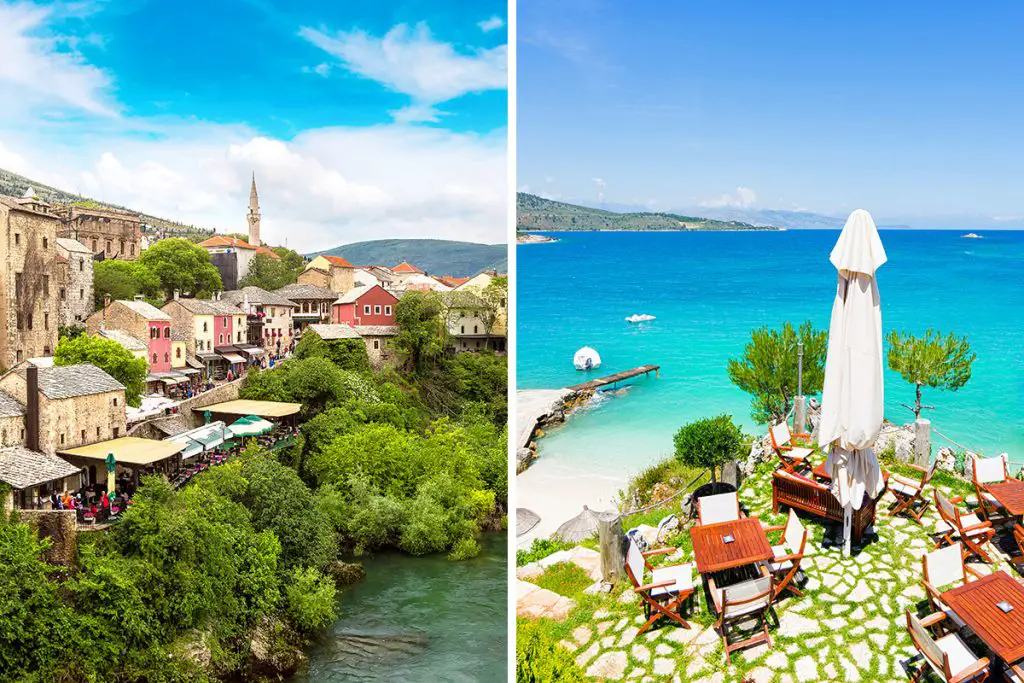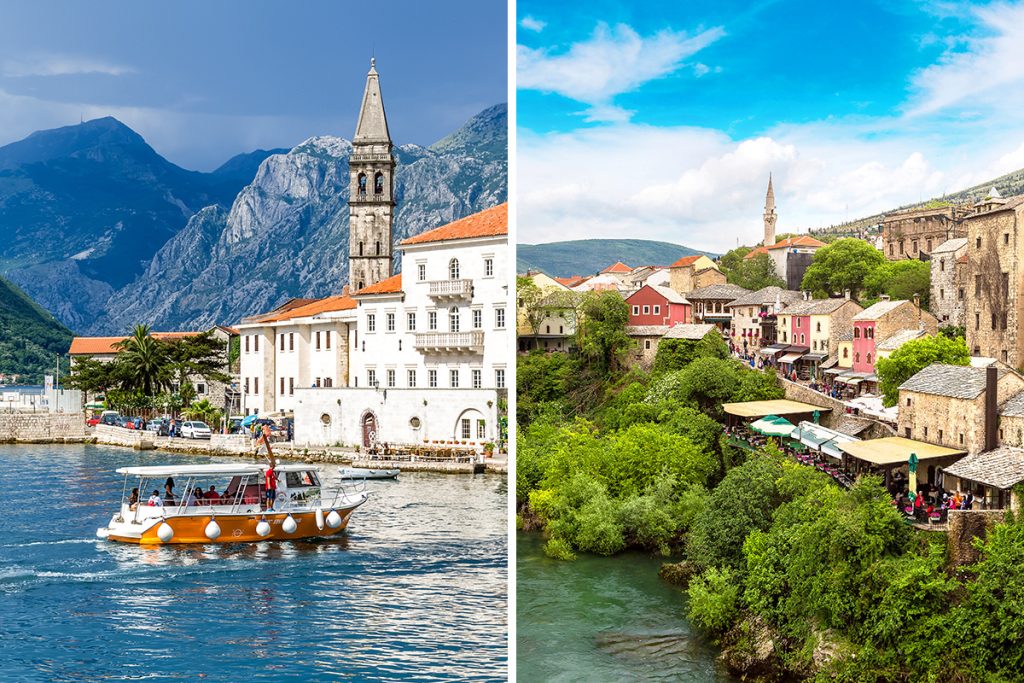The whispers of Montenegro’s serene beauty contrast sharply with the lively heartbeat of Albania’s cities. Each destination lays out a unique tapestry of experiences that beg to be explored. Your journey through the pages ahead promises to unveil the distinct flavors of history and culture embedded within these captivating lands.
History & Culture
Montenegro and Albania, nestled in the heart of the Balkans, carry a rich history that has shaped their distinct cultures. While both share a common geographical region, their historical timelines paint different pictures.
Montenegro’s history is a tale of resilience and a quest for independence. Over centuries, it’s carved a unique identity despite the swirling tides of empires vying for control. The narrative of Montenegro’s past is intertwined with a strong sense of national pride and a deep reverence for its historical landmarks.
Albania’s historical canvas, on the other hand, is splashed with a rich mixture of influences from various conquerors. It’s a land where ancient Illyrian tribes, Romans, Byzantines, and Ottomans left indelible marks. The country’s history is not just a chronicle of dates but a vibrant mosaic of cultural interactions that have birthed a unique Albanian identity.
Comparing the historical tapestry of Montenegro to that of Albania unveils a contrast of experiences. Montenegro offers a journey into a past where the struggle for sovereignty shaped the nation’s ethos. Albania invites you into a kaleidoscope of historical interactions that have molded its culture into a unique blend of traditions.
In summary, your voyage through the historical and cultural landscapes of Montenegro and Albania is akin to stepping into different epochs. Montenegro presents a serene reflection of a proud past while Albania offers a lively exploration of a diverse heritage. As you delve deeper, each destination reveals more layers of its identity, promising a rich exploration of the Balkans’ soul.
Attractions & Activities
Embarking on a journey through Montenegro and Albania unveils a realm of attractions and activities awaiting the keen explorer. Each destination offers a unique lens through which to experience the Balkans, with its own set of adventures and sights.
Montenegro, often referred to as the gem of the Adriatic, beckons with a landscape dotted with historical landmarks and natural wonders.
The ancient town of Kotor, encircled by imposing stone walls, invites you to wander through its medieval streets. The towering peaks of Durmitor National Park challenge the adventurous at heart to hiking and mountain biking escapades. The Tara River carves a dramatic canyon landscape, offering thrilling white-water rafting experiences.
Albania, on the flip side, unveils a diverse range of attractions steeped in history and natural beauty.
The ancient city of Gjirokastër, a UNESCO World Heritage site, narrates tales of bygone eras through its well-preserved Ottoman architecture. The Accursed Mountains’ rugged trails beckon hikers to explore Albania’s wild, unspoiled nature. Moreover, the historical site of Apollonia takes you on a journey back to ancient civilizations with its archaeological ruins.
The differing tapestry of attractions in Montenegro and Albania cater to a broad spectrum of interests. While Montenegro exudes a more tranquil and historical charm, Albania presents a blend of the old and the wild. The choice between a quiet stroll through Montenegro’s ancient towns or a vigorous hike through Albania’s rugged trails presents a delightful dilemma for the adventurous soul.
Beaches
The allure of the Adriatic and Ionian coastlines is hard to resist as you consider a visit to Montenegro or Albania. The pristine beaches of these nations, each with their unique charm, beckon for exploration and relaxation.
Montenegro’s coastline is adorned with a mix of quaint pebble beaches and secluded coves. The beaches here are often nestled amidst historic towns and picturesque landscapes. Budva’s Mogren Beach, split into two by a cliff, extends an invitation to soak in the Adriatic’s beauty amidst a scenic backdrop.
Albania’s beaches, on the other hand, stretch along both the Adriatic and Ionian seas, offering a wider variety of scenic spots. The shores of Dhërmi offer a blend of crystal clear waters and a peaceful ambiance, perfect for a tranquil beach day.
The contrast between Montenegro’s quaint and historical coastal ambiance and Albania’s more expansive and varied beach landscape caters to different preferences. Whether you fancy a quiet beach day with a historical backdrop in Montenegro or a more varied beach experience in Albania, the choice is as refreshing as the cool sea breeze.
Eating, Drinking & Nightlife
The culinary landscape of Montenegro and Albania is a reflection of the Balkans’ rich cultural mosaic. A voyage through their food scenes is a delightful exploration of traditions, flavors, and local delights.
Montenegro’s dining scenario is a warm invitation to savor the marriage of Adriatic and Mediterranean flavors. The coastal towns particularly are a haven for seafood aficionados. Montenegrin eateries often have a laid-back ambiance, allowing you to leisurely enjoy meals like the traditional Kotor fish soup or Njeguški Stek.
Albania’s culinary realm is a vibrant mix of Mediterranean and Ottoman influences. The local taverns, known as ‘tavernas’, offer hearty meals amidst a lively atmosphere. Dishes like Tavë Kosi and Fërgesë captivate the palate with their hearty flavors.
On to beverages, Montenegro has a proud tradition of winemaking. The Vranac grape is a local hero, contributing to the robust red wines the country is known for. Rakija, a fruit brandy, is another beverage that finds its place in Montenegrin toasts.
In Albania, the drinking culture also celebrates local wines, but raki – a strong fruit brandy – steals the spotlight. It’s a symbol of Albanian hospitality, often shared amongst friends and family during gatherings.
Nightlife in Montenegro is a quieter affair compared to Albania. It’s often centered around relaxed bars and lounges with a serene atmosphere. Albania, conversely, buzzes with a more vibrant nightlife scene, with Tirana’s nightclubs and bars pulsating with energy and music till the early hours.
In conclusion, the journey through the culinary, beverage, and nightlife scenes of Montenegro and Albania is a diverse one. Montenegro offers a calm, relaxed dining and nightlife experience, while Albania presents a livelier, more energetic vibe. Both, however, promise a rich tapestry of local flavors and traditions that add a zesty touch to your Balkan adventure.
Shopping
The shopping experience in Montenegro and Albania is a delightful immersion into the local culture and craftsmanship. Each nation has its own array of goods and markets that reflect its heritage and artisan skills.
In Montenegro, the quaint old towns like Kotor and Budva offer an array of boutique stores. Here, you can find unique souvenirs such as handmade jewelry, traditional Montenegrin clothing, and local artwork. The craftsmanship on display is a testament to the country’s rich heritage.
Albania’s shopping scene is a bit more bustling, with markets and bazaars like the Tregu Kombetar in Tirana, where a variety of goods can be found. From traditional Albanian costumes to locally produced olive oil, the diversity of products mirrors the country’s vibrant culture.
Montenegro’s shopping experience tends to be more serene and boutique-style, providing a leisurely pace for those who enjoy taking their time. On the other hand, Albania offers a more dynamic shopping atmosphere, reflecting the lively spirit of its people.
In both countries, the local markets are a fantastic place to interact with the locals and get a feel for the everyday life, besides getting your hands on some authentic souvenirs.
Summarizing, the shopping escapades in Montenegro and Albania offer a fascinating glimpse into the Balkans’ cultural diversity. Whether strolling through Montenegro’s quaint boutiques or haggling in Albania’s bustling markets, the shopping scene is sure to add a colorful stroke to your Balkan canvas.
Accommodation
Delving into the accommodation options in Montenegro and Albania opens up a realm of choices, each reflecting the character and hospitality of these Balkan treasures.
Montenegro’s lodging spectrum ranges from luxurious resorts nestled in the heart of nature to quaint stone villas in medieval towns. The coastal town of Budva, for instance, is dotted with charming boutique hotels that exude a sense of history and elegance. Further inland, mountain lodges in Durmitor National Park provide a rustic retreat amidst the serene beauty of nature.
On the other hand, Albania offers a mix of traditional guesthouses and modern hotels. In the historical town of Gjirokastër, traditional Ottoman houses have been transformed into cozy guesthouses, offering a taste of Albanian heritage. Conversely, the capital city, Tirana, boasts modern hotels and apartments equipped with contemporary amenities.
The charm of Montenegro’s accommodation lies in its fusion of history and natural beauty, providing a tranquil setting for relaxation. In contrast, Albania’s lodging scene offers a blend of the old and the new, catering to both traditionalists and modern travelers.
Overall, the accommodation in Montenegro and Albania reflects the blend of tradition, nature, and modernity that characterizes the Balkans. Your choice between the tranquil elegance of Montenegro and the vibrant diversity of Albania sets the tone for your Balkan adventure.
Family-Friendliness & Children’s Activities
Exploring the family-friendliness of Montenegro and Albania unveils a variety of activities and environments conducive to family bonding and children’s enjoyment.
Montenegro, with its calm ambiance and scenic beauty, offers a tranquil setting for families. The calm waters of Lake Skadar provide a safe haven for gentle boat rides, bird watching, and nature walks, making it a peaceful retreat for families.
Albania, conversely, presents a more energetic vibe with a host of interactive experiences. The ancient ruins of Butrint National Park offer a fun, educational outing for families, igniting the imagination of young minds with tales of ancient civilizations.
Furthermore, the open-air museums in both countries provide an engaging learning environment for children. The Old Town of Kotor in Montenegro and Gjirokastër in Albania are like stepping into a history book, with every stone narrating tales of the past.
In summary, Montenegro and Albania both present a host of family-friendly activities and environments. The serene beauty of Montenegro provides a tranquil backdrop for family bonding, while the lively and educational experiences in Albania promise a fun-filled family adventure.
Getting There & Getting Around
The journey to and through Montenegro and Albania is a part of the adventure, each offering unique transportation experiences that add to the charm of exploring the Balkans.
Getting to Montenegro is facilitated through its two main airports, Podgorica Airport (12 km or 7.5 miles from the capital) and Tivat Airport (4 km or 2.5 miles from Tivat). Albania’s main gateway is Tirana International Airport Nënë Tereza, situated 17 km or 10.6 miles from the heart of Tirana.
Once in Montenegro, the scenic drive along the Adriatic coast is a feast for the eyes. Public buses and taxis are the prevalent means of getting around, with car rentals offering a more flexible option for exploring the picturesque landscapes at your own pace.
In Albania, the transportation landscape is a bit more bustling. Public buses and furgons (shared vans) are common, offering an authentic experience of local life. Car rentals are also available for a more comfortable and personalized exploration.
Both countries have their own unique transportation landscape, each adding a different flavor to your Balkan adventure. The tranquil, scenic drives in Montenegro contrast with the lively, bustling transportation scene in Albania, each offering a unique perspective of the local life and culture.
Weather
The weather in Montenegro and Albania is one of the many factors that could entice travelers to these charming Balkan countries. Their climates share Mediterranean influences yet exhibit distinct seasonal variations that cater to different preferences.
Montenegro enjoys a Mediterranean climate along the coast with warm summers and mild winters.
Summer temperatures from June to August hover around 80°F to 95°F (27°C to 35°C), while the winter months of December to February see temperatures ranging from 40°F to 55°F (4°C to 13°C). The inland areas experience a continental climate with colder winters and moderately warm summers.
Albania, on the other hand, experiences a slightly warmer climate. The coastal areas enjoy mild winters and warm, sunny summers. The summer months from June to August see temperatures ranging from 85°F to 100°F (30°C to 38°C), while winter temperatures from December to February are usually between 45°F to 60°F (7°C to 16°C).
The slightly warmer temperatures in Albania could be a boon for those who thrive in warmer climates, whereas Montenegro’s milder temperature spectrum may appeal to those seeking a cooler retreat.
Both countries boast a good amount of sunny days, especially during the summer months, making them attractive destinations for travelers seeking to bask in the natural beauty of the Balkans under a warm sun.
In a nutshell, the choice between the slightly cooler climate of Montenegro and the warmer temperatures of Albania offers yet another dimension to consider in planning your Balkan adventure, each catering to different weather preferences with their own charm.
Safety
Safety is a paramount consideration when venturing into a new country. Montenegro and Albania both provide a secure environment for travelers, each with its own set of safety standards and protocols.
Montenegro has a reputation for being a safe destination with low crime rates. The country has a well-organized police force that maintains law and order, ensuring a secure environment for both locals and visitors.
Similarly, Albania is considered safe for travelers. The presence of law enforcement in urban and tourist areas contributes to the general safety and security of the country.
Unique non-crime-related safety considerations include emergency healthcare services and natural hazards. Both countries have healthcare facilities, though it’s advisable to have health insurance for peace of mind. Additionally, being in mountainous regions, it’s good to be prepared for sudden weather changes which could affect travel plans.
In summary, Montenegro and Albania provide a secure backdrop for your Balkan adventure, each with a well-organized law enforcement system and emergency services to ensure a safe and enjoyable experience.
Cost
Embarking on a journey to Montenegro and Albania offers a glimpse into the cost dynamics of these Balkan destinations. Both countries present a range of options that cater to varying budgets, yet exhibit different price points in certain aspects.
In Montenegro, you might find the cost of lodging to be moderate. A decent meal in a restaurant could cost around €8 ($8.40). Transportation, including public buses and taxis, also comes at a reasonable price, making it fairly easy to explore different parts of the country without breaking the bank.
On the flip side, Albania often comes across as more budget-friendly. Meals in local restaurants could range from €7 ($7.35). Transportation costs are also relatively lower, with a wider availability of budget options such as shared vans or furgons.
The cost spectrum in Montenegro and Albania reflects the countries’ economic landscapes. Montenegro’s prices tend to be a bit higher reflecting its established tourism infrastructure, while Albania, emerging on the tourism scene, offers more budget-friendly options.
Both countries offer a range of cost options to cater to varying budget preferences, from budget accommodations and eateries to more upscale options.
Summing up, the cost of exploring Montenegro and Albania offers a window into the economic landscape of these Balkan jewels. Whether you’re drawn to the slightly more upscale offerings of Montenegro or the budget-friendly options in Albania, both countries promise a rich experience without necessitating a hefty budget.
Which Is Better – Montenegro or Albania?
Embarking on a Balkan adventure comes with the delightful dilemma of choosing between the serene allure of Montenegro and the vibrant spirit of Albania. Each destination, nestled in the heart of the Balkans, unfolds a unique tapestry of experiences that beckon to be explored.
The historical and cultural richness of Montenegro and Albania is like a voyage through different epochs. Montenegro, with its serene reflection of a proud past, offers a tranquil escape into history. Albania, on the other hand, with its kaleidoscope of historical interactions, invites a lively exploration of a diverse heritage.
The calm allure of Montenegro’s history contrasts beautifully with the vibrant spirit of Albania’s past.
When it comes to attractions and activities, Montenegro exudes a tranquil charm with its quaint towns and majestic natural landscapes, perfect for those seeking a peaceful retreat. Albania, on the other hand, pulsates with a more energetic vibe, offering a blend of historical and natural adventures.
The choice between a serene stroll through Montenegro’s picturesque locales or a vigorous hike through Albania’s rugged trails caters to different adventure tastes.
The beach experience in Montenegro and Albania is a tale of two seascapes. The quaint and historical coastal ambiance of Montenegro offers a peaceful seaside escape, while the expansive and varied beach landscape of Albania promises a more lively beach adventure.
The contrast between the calm shores of Montenegro and the lively beaches of Albania caters to different preferences.
The culinary, beverage, and nightlife scenes of Montenegro and Albania offer a rich exploration of local flavors and social vibes. Montenegro’s calm and relaxed dining scene contrasts with the lively and energetic atmosphere of Albania’s eateries and nightspots. The tranquil evenings in Montenegro and the vibrant nightlife in Albania provide different flavors of social enjoyment.
Shopping in Montenegro and Albania is a delightful exploration of local crafts and markets. The quaint boutiques in Montenegro’s old towns offer a serene shopping experience, while the bustling markets in Albania provide a lively shopping atmosphere. The contrasting shopping experiences reflect the different paces of life in these beautiful Balkan nations.
In a nutshell, the choice between Montenegro and Albania hinges on personal preferences. For a tranquil, historical retreat amidst picturesque landscapes, Montenegro is a beautiful choice. For a more lively, energetic adventure with a blend of history and nature, Albania awaits with open arms. Each destination promises a unique and enriching Balkan adventure that caters to different tastes and adventure spirits.

